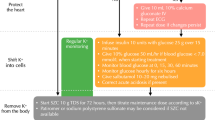Summary
The calcium antagonist (CA) controversy has been fueled in part by disagreements among scientists and clinicians over the scientific documentation required for drugs used to treat lifelong conditions. From a public health perspective, there are three unanswered questions: (1) Does long-term use of CAs convey health benefits to patients with cardiovascular disease (CVD)? (2) Is the long-term use of CAs safe? (3) Is the use of CAs cost effective? The answers to these questions determine the pertinence of three secondary questions: (4) Do the effects of CAs reflect a class action or are there important differences in health outcomes among subclasses of CAs? (5) Are the short-acting, immediate-release (IR) formulations different from the long-acting or the slow-release (SR) formulations? (6) What is prudent use of CAs? The purpose of this report is to summarize the answers to these questions from a public health perspective. (1) To data, use of CAs has not been documented to reduce the risks of cardiovascular complications of hypertension—stroke, myocardial infarction, congestive heart failure, or renal dysfunction. (2) The clinical trial database is inadequate to determine the long-term safety of CAs. The available data suggest that some formulations of CAs may be associated with an increased risk of cardiovascular and noncardiovascular events. (3) Even if slow-release CAs conveyed a benefit, their cost-effectiveness ratios are unlikely to be acceptable. (4) The non-dihydropyridines may offer an advantage over the dihydropyridines. (5) Whether the slow-release formulations differ from the immediate-release formulations in terms of their health effects remains to be seen. (6) It may be prudent clinically to restrict the use of CAs until proper documentation of long-term safety and efficacy and cost effectiveness is available.
Similar content being viewed by others
References
McClellan K. Unexpected results from MIDAS in atherosclerosis. Inpharma 1994;932:4.
Ferguson JJ, Momomura S. Highlights from the 58th Annual Scientific Meeting of the Japanese Circulation Society. Circulation 1994;90:2194–2196.
The GLANT Study Group. A 12-month comparison of ACE Inhibitor and Ca antagonist therapy in mild to moderate essential hypertension. The GLANT Study. Hypertens Res 1995;18:235–244.
Psaty BM, Heckbert SR, Koepsell TD, et al. The risk of myocardial infarction associated with anti-hypertensive drug therapies. JAMA 1995;274:620–625.
Pahor M, Guralnik JM, Corti M-C, Foley DJ, Carbonin P, Havlik RJ. Long-term survival and use of antihypertensive medications in older persons. J Am Geriatr Soc 1995;43: 1191–1197.
Lichtlen PR, Hugenholtz PG, Rafflenbeul W, Hecker H, Jost S, Deckers JW, on behalf of the INTACT group. Retardation of angiographic progression of coronary artery disease by nifedipine. Results of the International Nifedipine Trial on Antiatherosclerotic Therapy (INTACT). Lancet 1990;335:1109–1113.
Waters D, Lesperance J, Francetich M, et al. A controlled clinical trial to assess the effect of a calcium channel blocker upon the progression of coronary atherosclerosis. Circulation 1990;82:1940–1953.
Thadani U, Zellner SR, Glasser S, et al. Double-blind, dose-response, placebo-controlled multicenter study of nisoldipine. A new second-generation calcium channel blocker in angina pectoris. Circulation 1991;84:2398–2408.
Egstrup K, Andersen PE. Transient myocardial ischemia during nifedipine therapy in stable angina pectoris, and its relation to coronary collateral flow and comparison with metoprolol. Am J Cardiol 1993;71:177–183.
Furberg CD, Psaty BM, Meyer JV. Nifedipine: Dose-related increase in mortality in patients with coronary heart disease. Circulation 1995;92:1326–1331.
Yusuf S, Held P, Furberg C. Update of effects of calcium antagonists in myocardial infarction or angina in light of the second Danish Verapamil Infarction Trial (DAVIT-II) and other recent studies. Am J Cardiol 1991;67:1295–1297.
Ruzicka M, Leenen FHH. Relevance of intermittent increases in sympathetic activity for adverse outcome on short-acting calcium antagonists. In: Laragh JH, Brenner BM, eds. Hypertension. Pathophysiology, Diagnosis and Management. New York: Raven Press, 1995: 2815–2825.
Pahor M, Guralnik JM, Furberg CD, Carbonin P, Havlik RJ. Risk of gastrointestinal hemorrhage with calcium antagonists in hypertensive persons over 67 years old. Lancet 1996;347:1061–1065.
Crowson AN, Magro CM. Diltiazem and subacute cutaneous lupus erythematosus-like lesions. N Eng J Med 1995; 333:1428.
Furberg CD, Psaty BM. Should dihydropyridines be used as first-line drugs in the treatment of hypertension? The con side. Arch Intern Med 1995;155:2157–2161.
Furberg CD, Psaty BM. Calcium antagonists: Not appropriate as first-line antihypertensive agents. Am J Hypertens 1996;9:122–125.
Author information
Authors and Affiliations
Rights and permissions
About this article
Cite this article
Furberg, C.D., Psaty, B.M. Should calcium antagonists be first-line agents in the treatment of cardiovascular disease? The public health perspective. Cardiovasc Drug Ther 10, 463–466 (1996). https://doi.org/10.1007/BF00051111
Received:
Accepted:
Issue Date:
DOI: https://doi.org/10.1007/BF00051111




